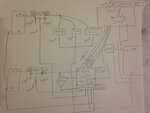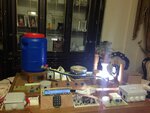- Joined
- Jan 22, 2008
- Messages
- 52,485
- Helped
- 14,756
- Reputation
- 29,794
- Reaction score
- 14,121
- Trophy points
- 1,393
- Location
- Bochum, Germany
- Activity points
- 298,363
And to face the facts, it's unlikely to achieve regular EMI strength with the circuit. Some things, e.g. switching power loads with a relay near the circuit simply must be omitted.When using open wire construction there will never be a ground plane.


